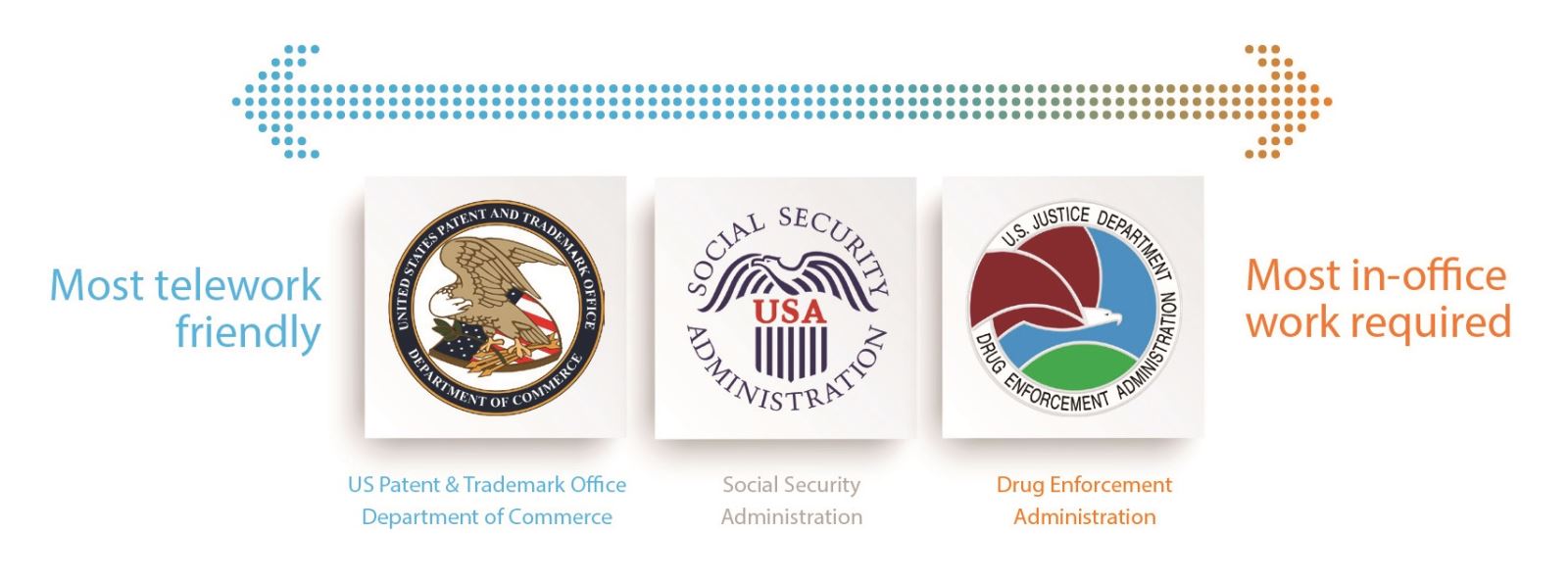With so much of the world “back to normal,” local governments, chambers of commerce, and commercial real estate stakeholders have been vociferous in their calls for federal employees to return to the office. As Washington, D.C., Deputy Mayor John Falcicchio stated:
"In terms of direct engagement, we haven't had much, because we really kind of get the same message from them — that people were coming back, but each agency was doing it their own way. So our ask remains the same, which is to have a uniform approach to bringing people back to the office, not just here in D.C., but nationally."
While many would like to see workers heading back to their desks at the pre-pandemic levels of 2019, the return-to-office story has been complicated. Still, there are reasons for building owners to be optimistic about securing and renewing government leases.

Shifting Perspectives
Over the past decade, government-leased real estate has experienced significant reductions in overall leased space consistent with initiatives to reduce the federal footprint. Additionally, the General Services Administration (GSA) has been integrating telework into its operations since well before the pandemic. Now that other government agencies have evidence that more work can be done remotely, they are tasked with determining what mix of in-person, remote and telework to permit going forward.
Arguably the biggest challenge for real estate owners is the lack of consistency among government agencies in their return-to-office strategies. Rather than a top-down, unified plan for all federal employees, there has been fragmentation across agencies, with each enacting different policies from mostly remote to mostly in-office to a hybrid schedule. Given the effects of the tight labor market on this sector, some agencies are taking a “wait and see” approach as they balance the need for in-person work with employee demand for flexibility.
Potential Scenarios
As government agencies with upcoming expiring leases rethink workplace needs and space utilization, here are three leasing scenarios building owners can expect.
1. Short-term Extension
Agencies not yet ready to commit to a return-to-office plan can negotiate short-term extensions of three to four years in lieu of making a long-term commitment. Although longer leases are ideal for financing certainty, a short-term renewal provides building owners with a potential interim solution. Owners can then work with their tenant agencies to study how employees use space in a post-pandemic world so they can be prepared for if the Government seeks a longer term at the end of the extension.
2. Long-term Planning
Owners with tenants prepared to make long-term commitments are in a favorable position. Agencies that are ready to firm up their working strategies now can capitalize on favorable market conditions brought on by the current workplace uncertainty by securing a long-term lease of 10+ years which would yield the most aggressive rates. In contrast, investors and owners unwilling or unable to meet the market may lose tenants to vacancies that support aggressive economics.
3. A Hybrid Approach
Agencies hedging their bets on workplace plans may opt to secure a 10- to 20-year lease with a termination option after year five, giving them more time to test their space layout and make definitive plans. In this scenario, building owners have what looks like a secure commitment through the next few years of uncertainty with the opportunity to keep the agency through the full lease term. Owners and lenders comfortable with this structure may be able to underwrite their way through the winds of change.
Getting Creative
The following options present opportunities for building owners to negotiate uniquely structured leases that make the best of the present challenges.
Trade Rent for Term
For large leases, owners can proactively renegotiate renewal options that go beyond standard predetermined rental rates. For instance, if GSA wants to exercise an option early, building owners may consider reducing the rental rate to keep the agency in place.
Proactive Reduction
In some cases, it may be inevitable that an agency reduces its office footprint. Rather than waiting to see what the agency proposes, owners can take control of the process and set the terms and conditions for the most beneficial result. For example, by hiring an architect to optimize the square footage, building owners can suggest alternative means of space reduction that achieve both GSA and ownership goals.
Pushing Higher Rates
GSA has acknowledged premiums exist for short-term lease extensions and building owners should push for them. Moreover, if the original government lessee downsizes or doesn’t renew, owners can use that short-term extension time to develop a plan with GSA for re-leasing by another agency.
Although owners and investors are navigating a murky period in government leasing, a proactive strategy that weighs various solutions can exert greater clarity and control while providing the flexibility required for each unique situation.
Lucy Kitchin and Matthew Lynch lead Transwestern’s Government Services Group in Washington, D.C.
SEE ALSO:
- Transwestern Capital Markets Symposium
- Embracing the New Flexible Work Environment
- Modeling Workplace Demand
RELATED TOPICS:
commercial real estate
real estate
agency leasing
real estate investment


